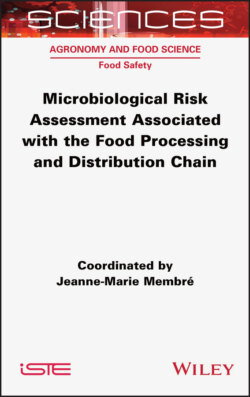Читать книгу Microbiological Risk Assessment Associated with the Food Processing and Distribution Chain - Jeanne-Marie Membre - Страница 15
Non-typhoid Salmonella spp.
ОглавлениеNon-typhoid Salmonella spp. are generally transmitted to humans through contaminated foods, usually of animal origin, such as eggs, pork and poultry, and dairy products; however, other foods, especially fresh produce, may also be involved in their transmission.
Typhoid Salmonella spp. generally cause gastroenteritis characterized by the acute onset of fever, abdominal pain, diarrhea, nausea and sometimes vomiting. Infection with Salmonella spp. can, however, cause disease, especially in children, the elderly and the immuno-compromised, and can lead to post-infection complications such as reactive arthritis. In the case of invasive Salmonella spp., a number of organs and systems can be affected, resulting in bacteremia, meningitis, osteomyelitis or septic arthritis and sometimes even death.
According to FERG estimates, non-typhoidal Salmonella spp. are the foodborne hazards responsible for the highest annual burden and the greatest number of deaths both globally and in the European region. Globally, according to FERG estimates, non-typhoid Salmonella spp. are responsible for approximately 78 million cases of disease and 59,000 deaths per year.
In Europe, non-typhoid Salmonella spp. hold the number one place in terms of deaths due to food risks. For example, in 2014, there were over 85,000 cases of salmonellosis and 65 deaths. The two most frequently reported Salmonella serovars in the European Union are S. enteritidis and S. typhi. The European Food Safety Authority has estimated that the overall economic burden of human salmonellosis could reach €3 billion per year.
According to a study by ANSES (2018), in France, over the period 2006–2015, the foods identified at the origin of outbreaks were in 40–45% of cases related to eggs or egg-based preparations. Meats were implicated in around 30% of outbreaks. Milk and dairy products represented only 9% of outbreaks from a suspected or confirmed food, but 19% of outbreaks from a confirmed food. Composite dishes (ready-cooked meals made from multiple ingredients such as couscous, lasagna, pizza, tartiflette) and fishery products were, in total, linked to slightly over 5% of salmonella outbreaks.
